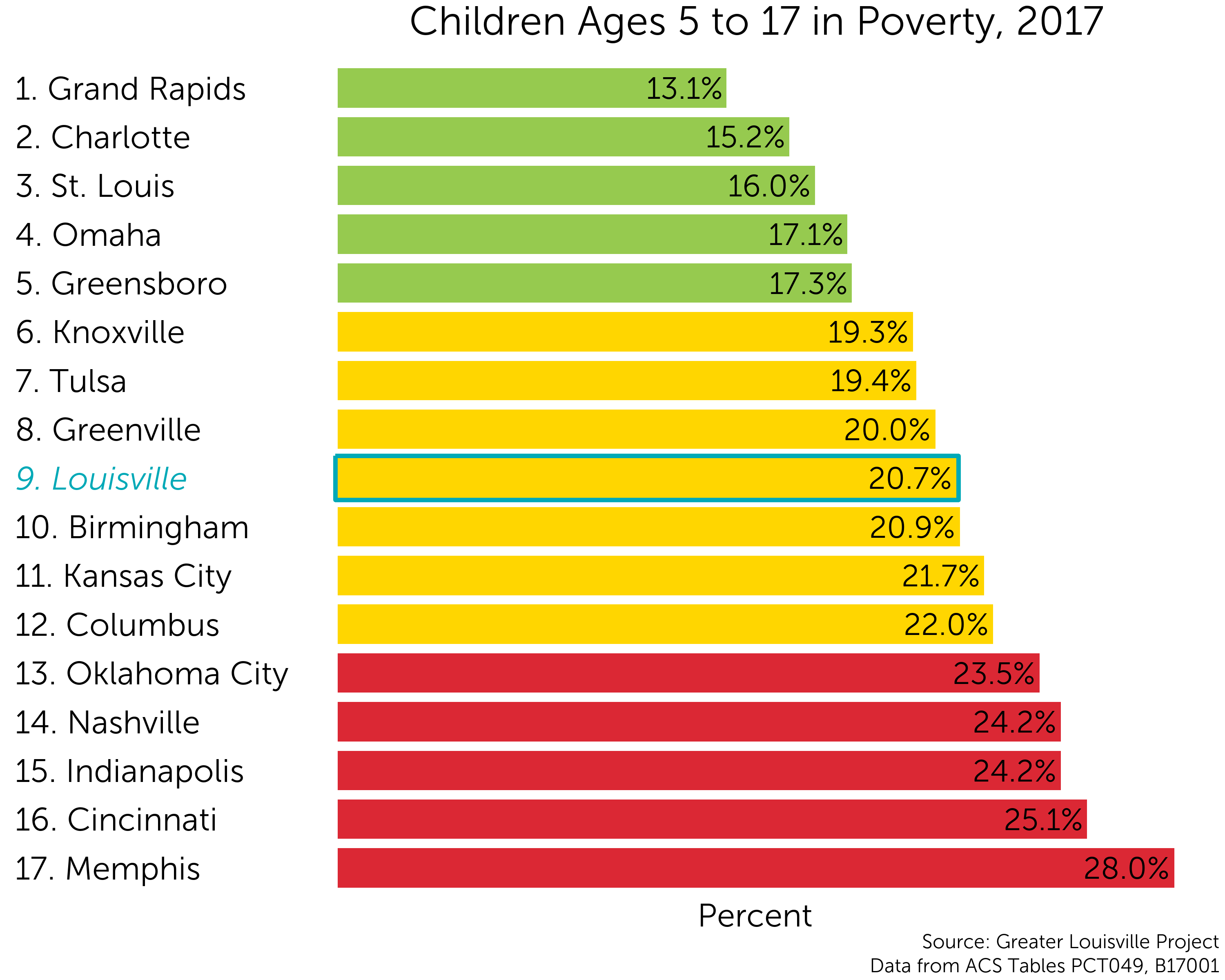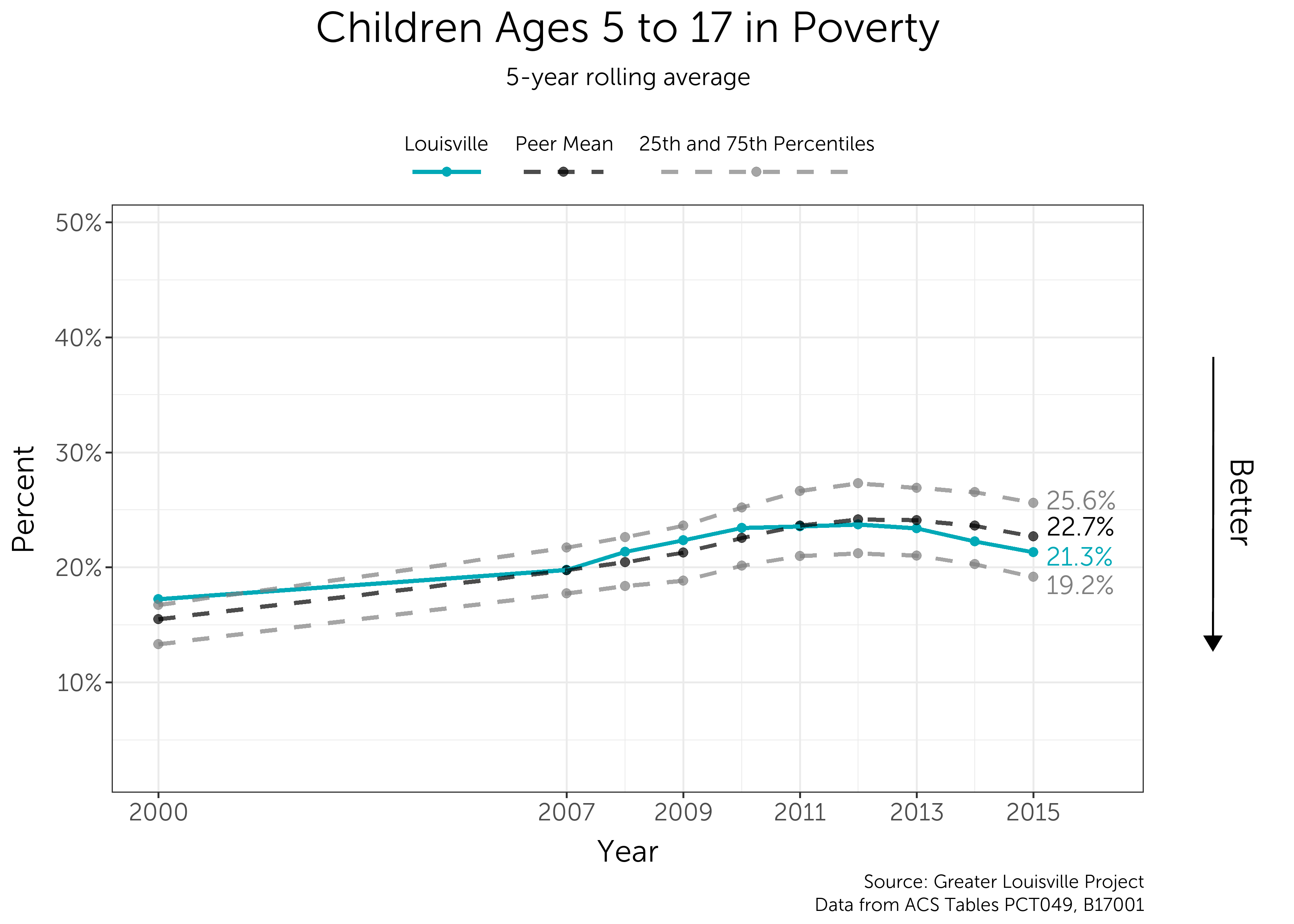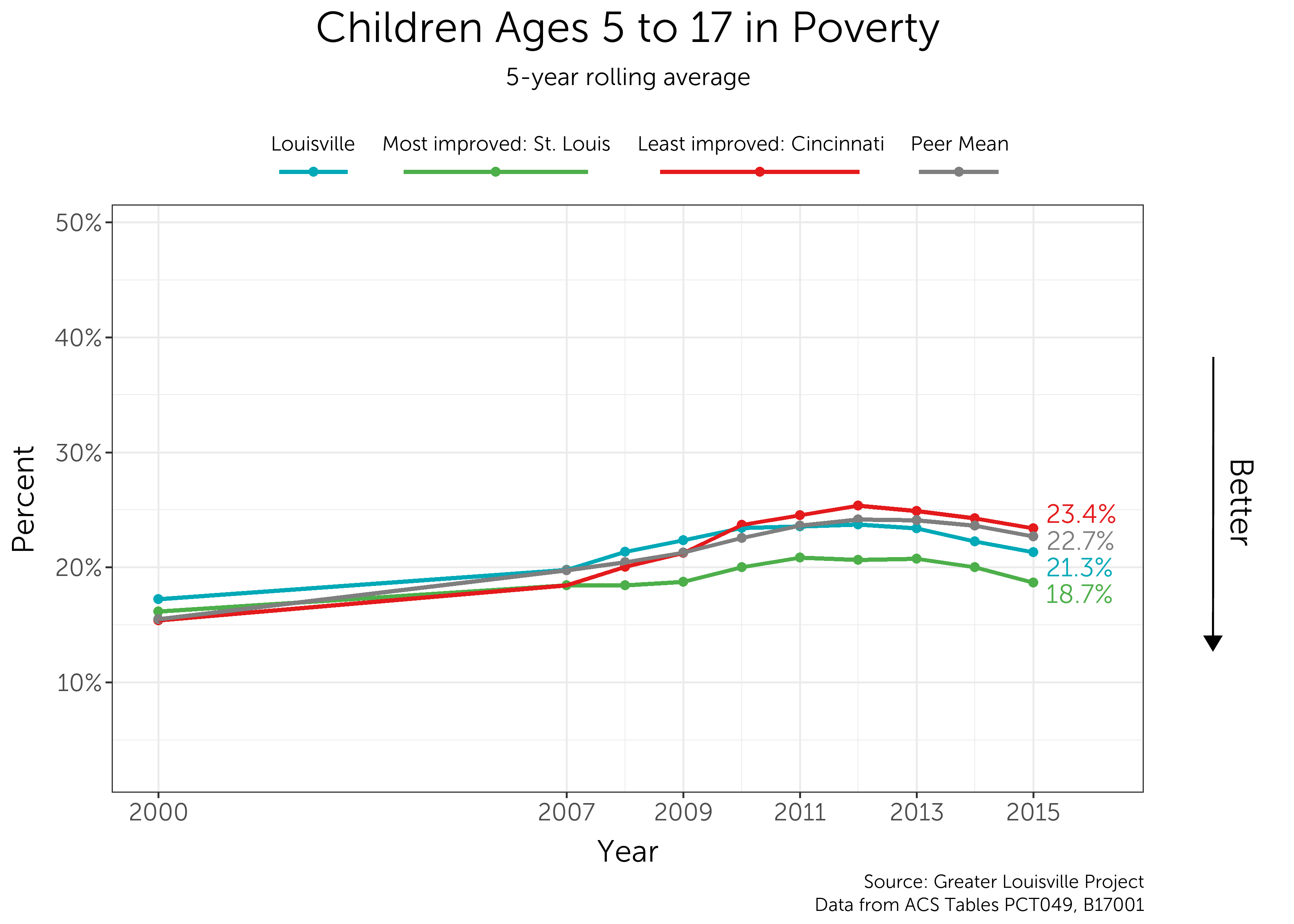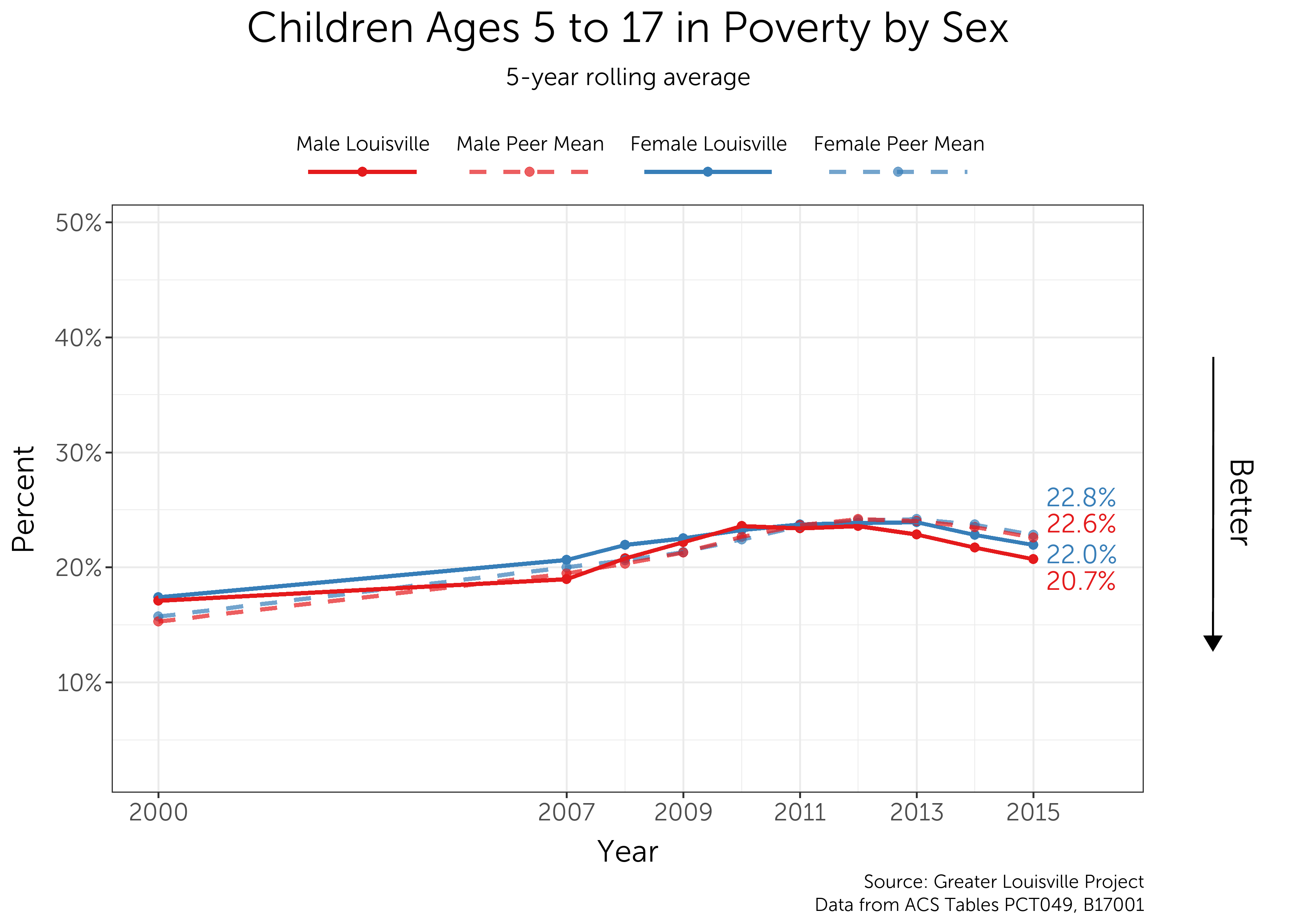Where is childhood poverty found in Louisville?
Although Louisville ranks 9th out of 17 cities in child poverty rates, child poverty varies substantially within the city. There are more children, ages 5-17, in poverty west of I-65. In the map to the left, areas with high rates of child poverty are purple, and areas with average to low rates are white.
Child poverty is most concentrated in Louisville’s western and downtown neighborhoods. Portland and Russel have the highest rates of child poverty at 67% and 66%. The lowest rates of child poverty are in Floyd’s Fork, the Highlands, and Northeast Jefferson.
Scroll over the map to see values for each census tract. Zoom in to see street names that form the boundaries of each tract.





